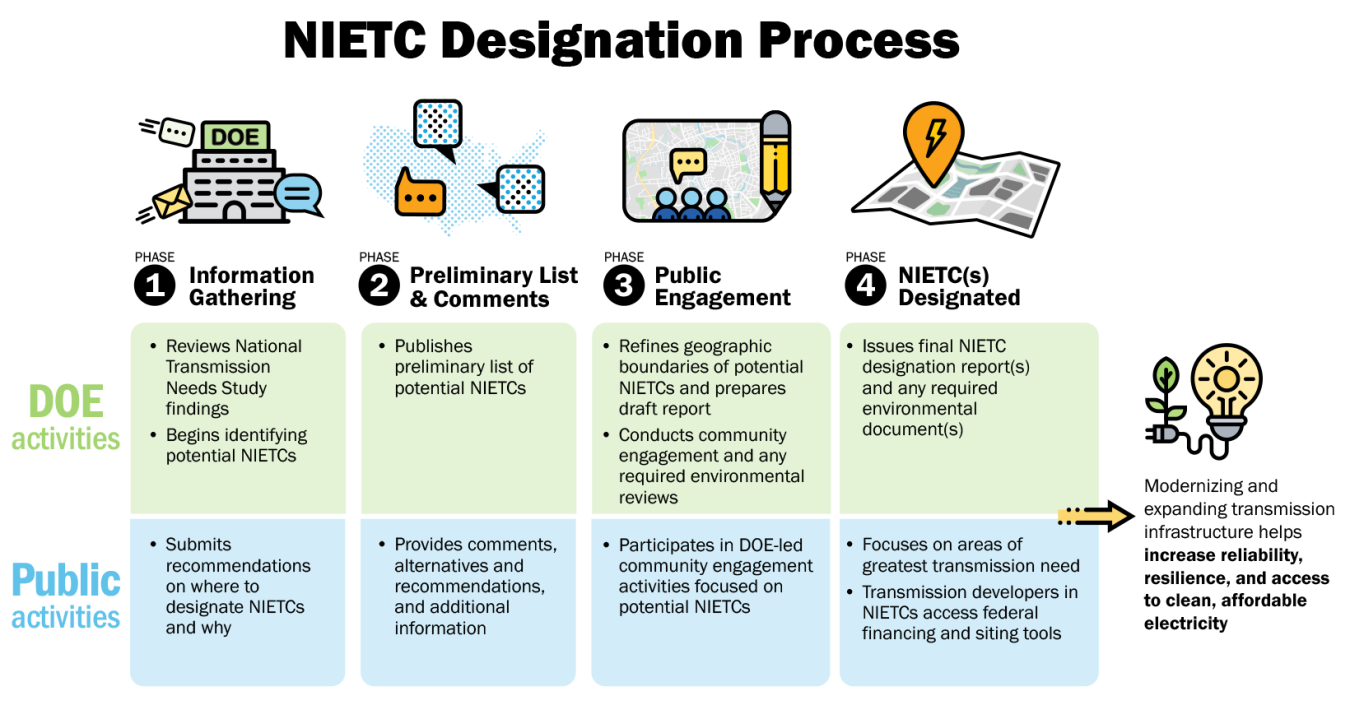First public submission window will remain open until February 2, 2024.
Learn more about the NIETC Designation Process.
Consumers are frequently harmed from a lack of transmission infrastructure, which can directly contribute to higher electricity prices, more frequent power outages from extreme weather, and longer outages as the grid struggles to come back online. While these needs are urgent, building and expanding electric transmission often requires several years of permitting, siting, and regulatory processes, especially if the transmission line extends through multiple states and regions.
To expedite and streamline this process, the Federal Power Act authorizes the Secretary of Energy to designate any geographic area as a National Interest Electric Transmission Corridor (NIETC) if the Secretary finds that consumers are harmed by a lack of transmission in the area and that the development of new transmission would advance important national interests in that area, such as increased reliability and reduced consumer costs.
A NIETC designation can unlock Federal financing tools, specifically public-private partnerships through the $2.5 billion Transmission Facilitation Program under the Bipartisan Infrastructure Law (BIL) and the $2 billion Transmission Facility Financing Loan Program under the Inflation Reduction Act (IRA). NIETC designation does not constitute selection of, or a preference for, a specific transmission project for financial purposes. A NIETC designation also allows the Federal Energy Regulatory Commission (FERC) to issue permits for the siting of transmission lines within the NIETC under circumstances where state siting authorities do not have authority to site the line, have not acted on an application for over one year, or have denied an application.
NIETC designations will be based on:
- Findings from the National Transmission Needs Study, DOE’s triennial state-of-the-grid report.
- Critical public input gained through early and meaningful collaboration with affected states, Tribes, local communities, industry, and stakeholders.
- Information and recommendations relevant to transmission capacity constraints or congestion that harms consumers currently or in the future, and ongoing roadblocks to transmission development in those areas, such as permitting, siting, or regulatory issues.
- Information on whether one or more transmission projects are under development in those areas.
On December 19, 2023, the Grid Deployment Office released final guidance for the NIETC designation process and opened the first window for public submission of information and recommendations on NIETC designation.
The final guidance outlines a four-phase process to assist DOE in independently identifying potential NIETCs.

The initial window for public submission for information and recommendations on NIETC designation will remain open until 5 p.m. ET on February 2, 2024. Submissions can be made by emailing NIETC@hq.doe.gov. The public will also have an opportunity to submit information in response to DOE’s preliminary list of potential NIETC designations, which it expects to release in Spring 2024. DOE anticipates re-opening the NIETC designation process after each publication of the triennial Needs Study or as determined by the Secretary.
A public webinar was held on January 3, 2024, to provide additional information about the first window for public submission.
Read the FAQs to learn more.
